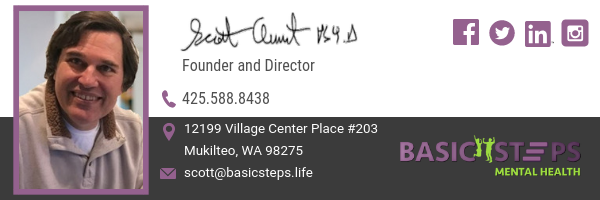
What Is the Best Healing Strategy?
They gave us an assignment in graduate school to create our own healing strategy. At the time I didn’t take it very seriously and came up with something cute to impress all the ladies. Well, that was 25 years ago, and from that moment I’ve asked myself the same question, what is the best strategy for a person to heal?
I’ve learned many psychological approaches and tools that to one degree or another proved to be very effective, but what was the best course of action to take, took a lot of tinkering. What this article demonstrates are the top approaches and the reasoning behind my theory. Granted this is one therapist’s opinion, but given my body of work from luxury treatment in Malibu, to the first mental health urgent care center in the country, I’ve tested and refined my approach and now share it with you.
The first counseling approach I fell in love with was Person-Centered Therapy. In this approach, the therapist simply listens to their client with an open heart and cherishes them. Be honest, how often does a person fully listen to you without any judgment, showing that they genuinely care? Plus, never giving you any advice? The theory of this approach is to allow a person the opportunity to search their mind, come up with their own solutions, and once they understand themselves at a deep level, they will heal.
I love this approach because it allows a client and counselor to create a trusting bond. Sometimes clients have never let another person in. But, without trust and being vulnerable, therapy can only go so deep.
So the first step is creating a loving bond and showing a client that they matter and you care about them.
The next phase is education. Therapy can be confusing to those who have never been treated or had therapy from somebody who had poor training. What I like to educate people on is developmental psychology and show them how early childhood trauma can have a lifelong impact if not addressed at the root. When a person goes through a shock, a portion of them can get stuck at that moment in time, what Fritz Perls from Gestalt Therapy coined “Being Fixated.” To unstick, love needs to be applied to that fixated part.
So the second step is using tools to provide love to the younger self. Here opposite handwriting is fantastic for written-out conversations. In this approach, allow your dominant hand to represent the adult or current you and write out a greeting to your younger self, then with your opposite hand, the younger you gets to write out a reply. This approach is no joke. Give it a try and see if it feels like you are really talking to a younger part inside of you.
Along with this is opposite hand play, allow your opposite hand or foot to represent the younger you and do things the younger self wants to do so they can feel better. This is the real deal and helps you heal your issues, right from the root. Here is my number one go-to in my practice, though I will not force its use. If someone doesn’t want to go there, I honor that. Who knew it could be so healing to bowl with the opposite hand, kick a soccer ball with the other foot, and draw pictures with the other hand?
The next part of my approach is strictly mental. And I am sure you have heard of Cognitive Behavioral Therapy or CBT. Unfortunately, this approach has limitations because we cannot think our way out of an emotional wound. Emotional issues need to be addressed emotionally and love and play therapy is the top method for getting to the root. This doesn’t mean that the mental approach doesn’t work. CBT is a great approach for discovering if the way you think about something is logical or not.
CBT was originally called Rational Emotive Therapy (RET). This approach has you paying close attention to the consequences of your actions. If you believe that somebody is doing something wrong and tell them off, the consequences may be a partner leaving you, a fist getting thrown in your face, you losing your job, etc. When something bad takes place after you do something, it is important to change the way you think about that and change your behavior so that negative results won’t happen again.
If you have a negative reaction to a person who has too many items in the fast checkout at the market, your belief system needs to be amended. If you think what they are doing is wrong, then who made you judge and jury? That rule you have created may not be their rule and whose rule is right? The right/wrong thinking has created war at home and abroad. Because they have 5 extra items in the fast checkout means that you need to be upset? Does everyone have to follow your rules? Let it go. Make the rule only for yourself. As for me, I choose to follow the rules to the best of my ability and others are doing the best that they know. This way of thinking will save you from constantly being upset and having run-ins with people who you feel are doing something wrong.
Here’s an example of something that recently happened with my roommate. She has had a habit of dropping things on the ground and not picking up after herself. Of course, I thought that people who didn’t pick up after themselves were not only lazy but rude. Internally I would get upset, angrily tell her that she was a slob, and soon realized that half of the clutter in the house was from me. But this was the good news. When another person upsets us, we can either lash out, causing ongoing friction or try to model the proper behaviors. So I cleaned up my shit, and in doing so, she did so too. I created a new rule that I choose to clean up after myself and she was going to do what she does. No longer did I hold in my mind that she should, must, or has to do what I wanted her to do, I just needed to set the example and give her the freedom to simply be.
The final step of my healing strategy is in regard to forgiveness. And no, it is not about forgiving other people because this is called “A Spiritual Bypass.”
Oh, I’ve heard it thousands of times. It is important to forgive and forget. I say that is lazy and there is an A – Z progress to healing. Not A, B, C, Z.
Think about it. Somebody abuses you, a part of you is now fixated on that time period and you are supposed to forgive them? In doing so, you are on some level putting your stamp of approval on their actions, causing internal strife. They abused you and you got hurt and the memories haunt you. Forgiving them bypasses the healing. Talk with your younger self, let them purge this memory as you listen to it with love, and then ask them what they need from you to feel better. When you follow through on that request you heal internally. Self-forgiveness is forgiving yourself for the judgments you have toward them or yourself. When we harshly judge another person, it only harms us. Forgiving ourselves for any judgment heals us. In regards to them, this is not a process of forgiving them but turning away from the judgment and honoring us instead.
Here is the format: “I forgive myself for judging them as an asshole and the truth is, they were doing the best that they knew.” The highlight here is forgiving you.
“But they raped my daughter or murdered my friend.” Then process through this in therapy and work on the underlying hurt so you can free yourself of your own personal hell. They did something but you continue to torment you. Work on your side of the fence. You live with yourself 24/7, how do you choose to be with yourself?
We heal by addressing our behaviors, our thoughts, and our emotions. The spirituality in this model is the application of love through kind words to ourselves, play activities with the wounded parts inside of us, and through the forgiveness of ourselves for the torment we do to ourselves.
Compassionate Care is Always Available
There are many more tools and strategies you can use in your pursuit of happiness. Here is where we come in. Contact us at Basic Steps Mental Health and let us support and educate you on this journey back to your loving heart center. Imagine living a heart-centered life, regardless of what is happening externally. We’d love to be of help.
For 25 years, Dr. Scott Alpert, the clinical director of Basic Steps Mental Health, has treated over 7,000 people with mental health and addiction problems, using a Psychological approach that mixes and matches ten of the top approaches used in the industry. We are here virtually and in-person to help you get through this COVID-19 pandemic and many other difficulties you may be experiencing.
May you have good mental health.
Related Posts
Changing Your Mindset
My panic attacks began when I was a teenager. From that moment my only focus...
Music Therapy
Years ago, I learned the value of music in therapy when I was working at an...




